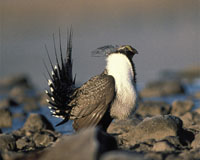 |
Lpndon, UK (SPX) Nov 29, 2010 They are the largest fish species in the ocean, but the majestic gliding motion of the whale shark is, scientists argue, an astonishing feat of mathematics and energy conservation. In new research published in the British Ecological Society's journal Functional Ecology marine scientists reveal how these massive sharks use geometry to enhance their natural negative buoyancy and stay afloat. For most animals movement is crucial for survival, both for finding food and for evading predators. However, movement costs substantial amounts of energy and while this is true of land based animals it is even more complex for birds and marine animals which travel in three dimensions. Unsurprisingly this has a profound impact on their movement patterns. "The key factor for animal movement is travel speed, which governs how much energy an animal uses, the distance it will travel and how often resources are encountered," said lead author Adrian Gleiss from Swansea University. "However, oceanic animals not only have to consider their travel speed, but also how vertical movement will affect their energy expenditure, which changes the whole perspective." For the past four years, Adrian Gleiss and Rory Wilson, from Swansea University, worked with Brad Norman from ECOcean Inc. to lead an international team to investigate the movements of whale sharks, Rhincodon typus, at Ningaloo Reef in Western Australia. They attached animal-borne motion sensors, accelerometers, to the free-swimming whale sharks to measure their swimming activity and vertical movement, which allowed them to quantify the energetic cost of vertical movement. The team's data revealed that whale sharks are able to glide without investing energy into movement when descending, but they had to beat their tails when they ascended. This occurs because sharks, unlike many fish, have negative buoyancy. Also, the steeper the sharks ascended, the harder they had to beat their tail and the more energy they had to invest. The Whale Sharks displayed two broad movement modes, one consisting of shallow ascent angles, which minimize the energetic cost of moving in the horizontal while a second characteristic of steeper ascent angles, optimized the energetic cost of vertical movement. "These results demonstrate how geometry plays a crucial role in movement strategies for animals moving in 3-dimensions," concluded Gleiss. "This use of negative buoyancy may play a large part in oceanic sharks being able to locate and travel between scarce and unpredictable food sources efficiently."
Share This Article With Planet Earth
Related Links British Ecological Society Darwin Today At TerraDaily.com
 Sage-Grouse Western Habitat Map Completed
Sage-Grouse Western Habitat Map CompletedWashington DC (SPX) Nov 29, 2010 Secretary of the Interior Ken Salazar has announced the completion of a breeding bird density map for the greater sage-grouse by the Bureau of Land Management in coordination with the Western Association of Fish and Wildlife Agencies, the U.S. Fish and Wildlife Service, and the Natural Resources Conservation Service. The map identifies important range-wide focal areas having high density o ... read more |
|
| The content herein, unless otherwise known to be public domain, are Copyright 1995-2010 - SpaceDaily. AFP and UPI Wire Stories are copyright Agence France-Presse and United Press International. ESA Portal Reports are copyright European Space Agency. All NASA sourced material is public domain. Additional copyrights may apply in whole or part to other bona fide parties. Advertising does not imply endorsement,agreement or approval of any opinions, statements or information provided by SpaceDaily on any Web page published or hosted by SpaceDaily. Privacy Statement |